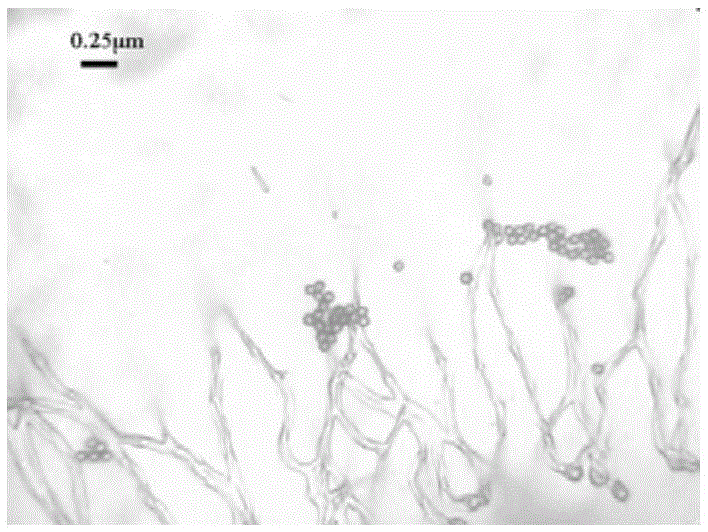Aspergillus sydowii with broad-spectrum pesticide degradation characteristics
A technique of Aspergillus polypolyphagoides and pesticides, applied in the field of environmental biology, can solve problems such as soil repair defects, lack of tolerance, and compound pesticide pollution, and achieve high application value
- Summary
- Abstract
- Description
- Claims
- Application Information
AI Technical Summary
Problems solved by technology
Method used
Image
Examples
Embodiment 1
[0018] [Example 1] Screening of broad-spectrum pesticide-degrading bacteria
[0019] The experimental soil and water samples were collected from the rhizosphere and non-rhizosphere soil samples around the new plant of Qinong Chemical Co., Ltd., Qizhou Town, Hubei Province, and the water samples were also collected from 5 drainage outlets of the plant. After the water samples were collected, they were immediately stored in the laboratory at -20°C to kill insects, plant tissues and some viruses in the soil. After 10 hours of treatment, it was thawed at 4°C, and the excess soil samples were stored in a 4°C refrigerator. Take 10g soil sample or 10mL water sample, add 100mL sterilized liquid enrichment medium (containing sterile glass beads) (enrichment medium composition: peptone 10g / L, NaCl1.0g / L, KH 2 PO 3 1.0g / L, pH=7), shaking at 150rpm for 7 days. After culturing for 1 week, take 10 mL of the culture solution in the enriched medium, and add 50 mg / L trichlorfon (TR), malath...
Embodiment 2
[0025] [Example 2] identification of bacterial strains
[0026]Inoculate the purified bacterial strain on solid PDA medium (ingredients: potato 200g / L, glucose 20g / L, agar 20g / L, pH=7) and cultivate for 5 days to observe the bacterial colony morphological characteristics of the bacterial strain on the solid plate, and then pick some Colonies were observed under an optical microscope to observe the microstructure of the strain, and the morphological characteristics of the strain were recorded: the hyphae were fine and net-like, with a diameter of about 0.15 μm; the spores were brown in color, round in shape, and about 0.10 μm in diameter; The stem is slender, uniform in diameter, with obvious branches, forked branches with acute angles, and the branches are asymmetrical.
[0027] The identification of physical and chemical properties of the strain mainly detects carbon source utilization and nitrogen source utilization physiological and biochemical tests. The results are recor...
Embodiment 3
[0032] [Example 3] Degradation rate analysis of bacterial strains to trichlorfon, 2,4-D and beta-cypermethrin
[0033] Use liquid MSM medium, and set the final concentration after adding three kinds of pesticides to 100mg / L. Before the measurement, inoculate the strain in PDA slant medium for cultivation, activate and cultivate at 28°C for 72 hours, then take 1mL sterile water, Add in the slope, scrape the spores and hyphae of the fungus on the slope into sterile water to form a spore suspension, with a volume ratio of 3% (initial inoculation spore content 10 9 individual / mL, biomass <0.1g) was added to the culture medium. All cultures were shaken at 28°C for 5 days based on a shaking table with a rotation speed of 150 rpm (the trichlorfon experimental group needed to be cultured for 14 days), and the dry weight of the PAF-2 strain in each group was determined using high performance liquid chromatography (HPLC). Degradation rates of strains to trichlorfon, 2,4-D and beta-cype...
PUM
 Login to View More
Login to View More Abstract
Description
Claims
Application Information
 Login to View More
Login to View More - R&D Engineer
- R&D Manager
- IP Professional
- Industry Leading Data Capabilities
- Powerful AI technology
- Patent DNA Extraction
Browse by: Latest US Patents, China's latest patents, Technical Efficacy Thesaurus, Application Domain, Technology Topic, Popular Technical Reports.
© 2024 PatSnap. All rights reserved.Legal|Privacy policy|Modern Slavery Act Transparency Statement|Sitemap|About US| Contact US: help@patsnap.com










